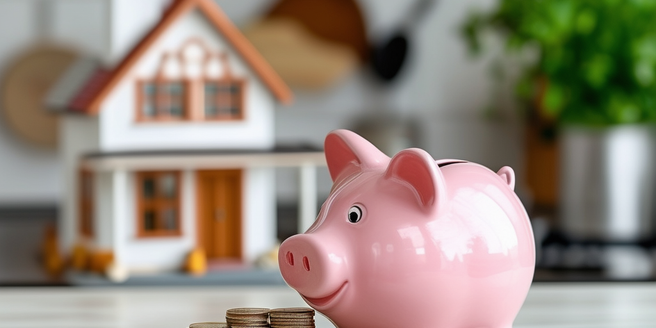
Understanding the Basics of Home Financing
The process of securing finance to purchase a home involves several steps including initial application, approval, and home loan repayment. It’s vital for future homeowners to understand these steps, equipping them with the knowledge needed to make informed decisions about their property investments. Furthermore, it’s crucial to understand home financing components such as down payments, interest rates, and the variety of mortgages available that distinguish the loan’s terms including its length and rate type. Insights into these aspects allow future homebuyers to make decisions aligning with their financial needs and goals, optimizing benefits from their chosen home financing method, and predict potential risks and challenges. Thus, understanding the various elements of home financing prepares prospective homeowners to navigate the complex process of purchasing a property, ensuring they secure the best possible deal on their future homes.
Securing a Good Mortgage Rate: Factors to Consider
Securing a home loan is a major financial decision. Attaining a favorable mortgage rate is crucial for significant savings over the loan’s lifespan by impacting your monthly payments. This rate depends on your credit score, debt-to-income ratio, loan-to-value ratio, and the overall economic conditions at the time of application. Your credit score reflects financial trustworthiness, with higher scores often leading to better rates. The debt-to-income ratio, the percentage of your income spent on paying off debts, reassures lenders of your repayment capacity if lower. Similarly, the loan-to-value ratio, namely the loan amount in relation to property value, affects the rate. Broader economic climates can also affect mortgage rates, such as during high inflation when rates typically rise due to increased borrowing costs. Therefore, application timing may affect the rate. Good personal financial management, crucial for securing beneficial mortgage rates, also contributes to overall financial vitality and brings you closer to owning your dream home.
What Goes into Your Monthly Mortgage Payment?
A monthly mortgage payment, familiar to most homeowners, is typically comprised of four key elements: principal, interest, taxes, and insurance – collectively referred to as PITI. The principal reduces your outstanding balance over time, whereas interest is what the lender charges for the loan. The interest payment is subject to change throughout the loan tenure, being highest initially and reducing as more of the principal balance is paid off. The remaining elements – property taxes and homeowner’s insurance – cater to your obligations as a homeowner. Property taxes are a financial obligation to local government based on your property’s assessed value. Homeowner’s insurance, on the other hand, protects your investment by covering potential damages, with premiums often bundled into monthly payments for consistency. In summary, a monthly mortgage payment is a blend of PITI elements, and understanding their individual roles can help you manage your finance effectively.
How Does My Credit Score Impact Home Ownership?
Your credit score, a numeric representation of your creditworthiness, plays a crucial role in major financial decisions, notably your eligibility for mortgage loans and the related interest rate. It’s widely accepted that a higher credit score generally leads to a lower interest rate as such individuals are seen as less likely to default due to their responsible debt management. This relationship can result in substantial savings over the life span of the loan. Maintaining a strong credit score is thus vital – achieved through timely debt repayment, avoiding excessive credit use, and cultivating diverse forms of credit. Being negligent in these areas could lead to a lower score, inviting higher interest rates. Ensuring continuous efforts towards upholding a high credit score is of utmost significance for those planning on getting a mortgage loan, as it can lead to better terms and notable savings in the long run.
The True Cost of Home Ownership: Beyond the Mortgage
Owning a home involves not just mortgage payments, but also additional expenses such as homeowner’s insurance, property taxes, maintenance, and potentially homeowner association fees. Homeowner’s insurance protects your property against damage or disasters, and can even be a requirement from mortgage lenders. Property taxes, based on your property’s assessed value, are obligatory and fluctuating costs. Maintenance costs, ranging from regular upkeep to significant foreseeable expenses like plumbing or electrical work, necessitate contingency funds. If your property is within a planned community, homeowner association fees for maintaining communal areas may be applicable. Budget planning needs to include these potential expenses along with your mortgage payment, as they could lead to financial stress if ignored. Understanding these costs will help you grasp the true cost of homeownership beyond the mortgage payment.
Future Planning: Building Equity and Refinancing Options
Building up equity in your home through consistent mortgage payments enhances the value of your homeownership as every payment contributes to the valuation of your residence which can be used as a resource for future exploits. Utilizing home’s equity can help fund significant expenditures such as home improvements or act as a cushion for unexpected large expenses. Mortgage refinancing is another worthwhile financial strategy, especially when market interest rates are lower, potentially offering thousands in savings. Also, if your financial conditions have improved since acquiring your original mortgage it could qualify you for better terms, potentially resulting in lower payments or a shorter loan period. Aside from paying down your mortgage and building equity, staying vigilant to financial strategies like refinancing can provide maximum financial benefits.
